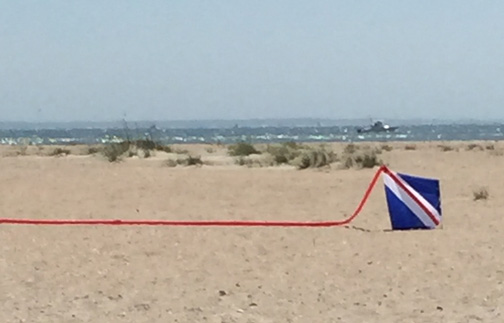Goodness me ..... !!
A skinny tyre will dig in. Probably the best example I can give you is aquaplaning. Think of a big wide fat car tyre hitting just a few inches of water hard - it will skim over the top of the water like a flat bottomed barge. A thin tyre will cut through the water and continue to make contact with the tarmac below.
Off roading is much the same - a skinny tyre on dirt will perform much better than a fat wide one.
On tarmac, the downside (in my opinion) is pretty much only contact patch. Jump jim and Arsey may not think so, but they ride like a pair of girls

If you really are going to push the envelope on corner entry then front end feel is your whole world, and a 90/90 won't give you quite the confidence that a conventional front tyre will. (pretty subjective though)
For the benefit of that welsh Cock mellors I will now bang on about slow steering and stunt kites


This bend is just down the road from me. It's a good example of real road riding (as opposed to 1190 pannigale developed from the track riding..). If you swiftly take this corner, eyes into the vanishing point etc, a sports bike will want to come off line and follow your eyes. But I don't want that to happen. I want my eyes to steer faster than my bike! I want my bike in the above example to track that nearside hedge row and ..... almost under steer! I want it to be just slightly lazier than my brain and to catch up with it half a second later - like the kite tail!
If the bike BANG followed my eyes BANG every where I looked BANG

D) ..... then long lazy lines are harder to achieve because every turn of the head and that moto GP inspired 17" front wheel with geometry that puts it under my bollocks will follow me.
Of course ... of course .... a 21" front wheel never has and never will win the IOM!! But for you and me, who play a more gentle serenade on the public roads, (not that gentle Arsey ... keep up FFS ..) then the laziness of under steer, has real benefits.











